The selection of the optimal method to deal with varicose veins is an urgent problem faced by patients and phlebologists. In the early stages of pathological development, a very conservative method of treatment is used, which makes it possible to preserve varicose veins. However, if such a technique turns out to be ineffective, the only appropriate option to change the situation for the better is surgery to remove the vein in the leg. Surgical intervention is the most radical method of dealing with varicose veins, as areas far from the damaged duct cannot change the varicose veins anymore.
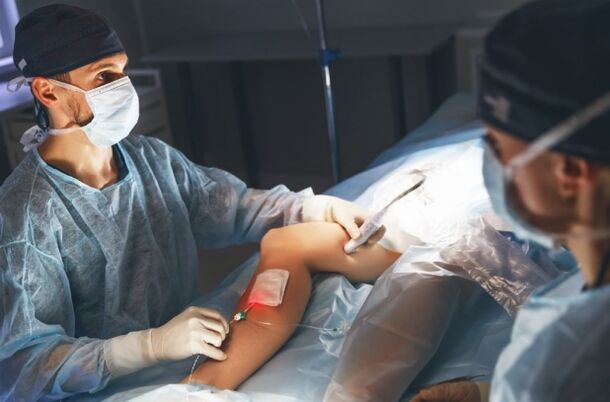
In this article, we will consider the types of surgery to remove veins for varicose veins that can be offered by modern vascular surgery: its features, pros and cons, features of preparation and implementation, as well as recovery and possible complications.
What can be achieved with leg vein surgery?
Surgical intervention for varicose veins aims to solve the following problems:
- Elimination of reflux - pathological reflux caused by venous valve failure.
- Removal of varicose veins. It is recommended if the vein undergoes a serious transformation and there is no hope of restoring normal blood flow in it. In this case, the part of the vessel that affects the varicose vein is removed, and blood from it is distributed through the healthy vein.
- Fights cosmetic blemishes. Since CVI (chronic venous insufficiency) and the varicose veins caused by it do not change the appearance of the lower leg in the best way, surgery should be aimed, among other things, at removing aesthetic defects.
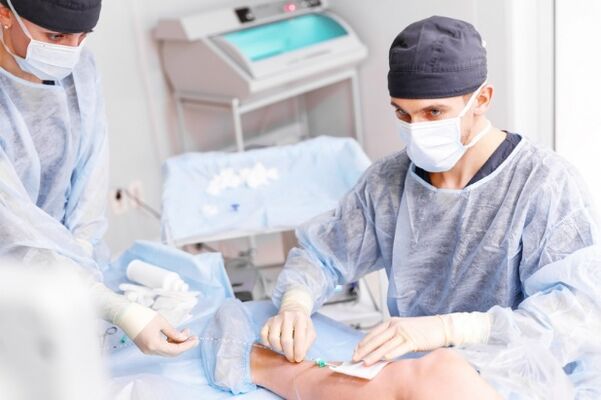
Types of venous surgery
The types of surgical interventions that can be performed by modern angiosurgery to combat varicose veins are divided into two groups:
- Surgery aimed at mechanical resection of varicose veins affected by varicose veins with subsequent ligation.
- Surgery associated with thermal or chemical exposure to varicose veins.
The selection of the most appropriate leg vein surgery depends on the stage of pathological development, the age and general health of the patient, as well as the goals achieved during the procedure.

Phlebectomy of the veins of the lower leg: the course of surgery
Combined phlebectomy (venectomy) is the "gold standard" in the surgical practice of treating varicose veins.
This method aims to get rid of dilated varicose veins.
The operation has several types, each named after the inventor: phlebectomy according to Bebkokk, according to Narat, according to Mueller, performed under local anesthesia (with extensive vascular lesions - under general).
Although there are differences, all operations to remove leg veins have one thing in common: these involve cuts or punctures in the skin from a length of 1 mm to 5-6 cm, in which the angiosurgeon pulls the affected vein to the surface using a special hook. The veins are cut, tied and removed, after which a special suture or plaster is applied to the skin. This operation to get rid of varicose veins in the legs is very effective and allows you to achieve positive results in the treatment of venous pathology.
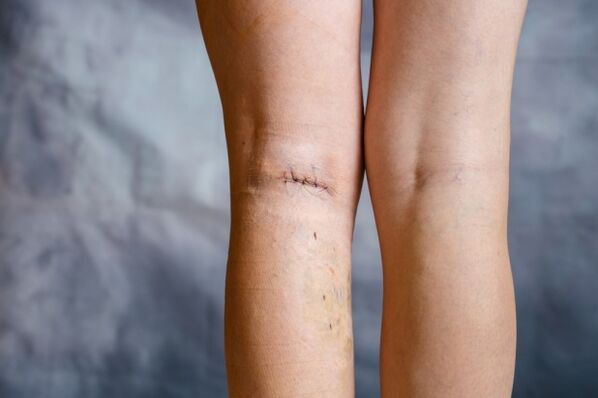
Laser vein surgery
With the development of medicine in the warehouse of vascular surgeons, more modern and less traumatic methods of performing surgery to remove veins are beginning to emerge compared to classical surgical interventions. With their help, it is possible to reduce procedure time, minimize postoperative scarring, and even reduce the possibility of complications and side effects. One of these methods is laser surgery on a vein in the lower leg (endovascular, endovasal, or endovascular laser coagulation).
A special laser light indication is inserted into the cavity of the affected vessel, heating the walls of the blood and veins. Under the influence of high temperatures up to 120 degrees, the vessel wall sticks, as a result of which blood stops flowing to this part of the circulatory system.
Expert opinion
Depending on the area of the lesion and the number of veins to be removed, treatment of varicose veins in this way usually requires several procedures that last 30-60 minutes.
Surgery to remove veins with a laser is low trauma, gives a good cosmetic effect (after which there are no scars and scars on the skin), does not require long -term treatment in the hospital. However, it should be noted that this technique is not suitable for treatment in the final stages of varicose veins, when the diameter of the vein increases significantly and there are varicose veins; to eliminate it, traditional surgical intervention is required.

Sclerotherapy
This is another modern venous removal surgery that allows you to achieve significant results with minimal trauma. Sclerosant is injected into the lumen of a dilated vessel - a special liquid or foam material that attaches to the wall of the area affected by the vein. Running a course of sclerotherapy allows you to achieve a quick cosmetic effect without scarring, which makes it very popular. However, this procedure is only suitable for the early stages of varicose veins, as well as telangiectasias.

Radio frequency vein surgery
RFA (radio frequency elimination) is an effect on the affected area of the blood vessel with a specific radio frequency signal, which results in heating of the venous wall, destruction of the endothelium and sealing of the vascular lumen. This procedure is minimally invasive and does not require hospitalization.
Preparing for vein surgery
Before surgery, it is necessary to perform preparatory steps: ultrasound of the veins in the lower leg, clinical blood tests and coagulogram. The night before the procedure, you should shave the legs without using creams, gels and other cosmetics.
Expert opinion
If general anesthesia is planned, you should stay away from food 8 hours before the procedure (although in some cases the doctor may allow snacks). Also, a cleansing enema may be needed before general anesthesia.
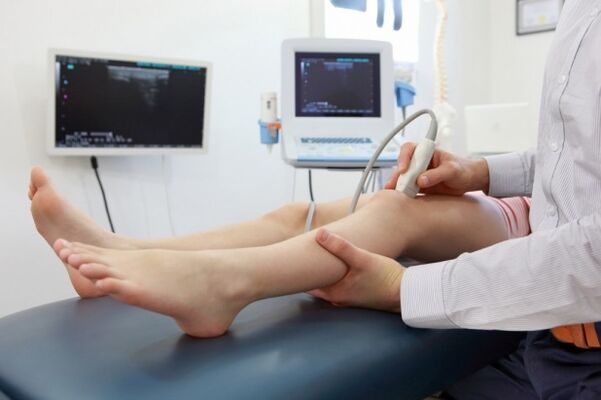
Contraindications to leg vein surgery
This surgical intervention is not recommended during pregnancy, with serious endocrine and cardiovascular pathology, at the time of exacerbation of chronic diseases, in the presence of infectious and inflammatory processes in the legs.
Recovery after vein surgery
The length of the recovery period depends on the number of veins removed, the general health of the patient, and his or her adherence to the phlebologist’s recommendations.
Typically, the recovery period lasts from 2 months to six months.
Depending on the type of surgery, limited activity may be recommended to the patient during the recovery period. For example, after laser coagulation and sclerotherapy, you can get up and move immediately, after sclerotherapy, you must walk for about an hour, while a combined phlebectomy requires a certain period of restriction of movement.

Recommendations for recovery after leg vein surgery
To reduce the risk of recurrence and postoperative complications, there are a number of restrictions and recommendations that should be adhered to:
- You should wear knitwear with the appropriate level of compression. Tension or stockings after vein surgery are a prerequisite for the restoration of normal blood flow in the lower leg.
- Fix the load on the legs. It’s important to choose the "golden mean" here: don’t let both move and stand, sit, run long.
- Do not lift weights (during the recovery period, the maximum weight allowed is up to 5 kg).
- Do not take hot showers, do not take steam baths or saunas, avoid skin contact in isolated vein areas of direct sunlight for some time.
- Wear loose -fitting pants or skirts, wear tight and uncomfortable shoes (especially with heels).
- Take the medication prescribed by your doctor. Often, venotonic intake, anticoagulants, antioxidants are prescribed.

Consequences and complications after vein surgery
Any surgical intervention can lead to unintended consequences, and surgery on a vein in the lower leg is no exception. Potential complications include the following:
- Relapse of varicose veins. If the cause of varicose veins is not eliminated, most likely the disease will return. Therefore, in addition to surgery on the leg veins, it is necessary to conduct a comprehensive treatment of the pathology and eliminate the provoking factors.
- Temperature rise. A slight increase in local temperature in the area of the removed vein is normal in the postoperative period. Also, for 1-2 days after the end of the procedure, the total body temperature can remain at subfebrile levels.
- Hematoma. Bruising after venous surgery is a common complication after venous removal. It is caused by perforated vessels. Small bruises often disappear without additional treatment within a few weeks. But, if you experience large and painful bruises that don’t go away for about 2 weeks, report it to your phlebologist.
- Pigmentation disorders. The discoloration of the skin at the site of surgery usually persists for several weeks and then disappears. Keep in mind that hyperpigmentation is a very common complication after sclerotherapy.

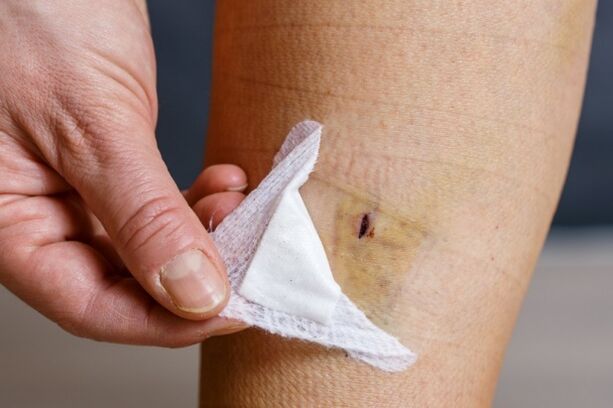
To avoid this unpleasant phenomenon, do not ignore medical recommendations, be sure to wear compression socks and take medication recommended by a phlebologist.




































